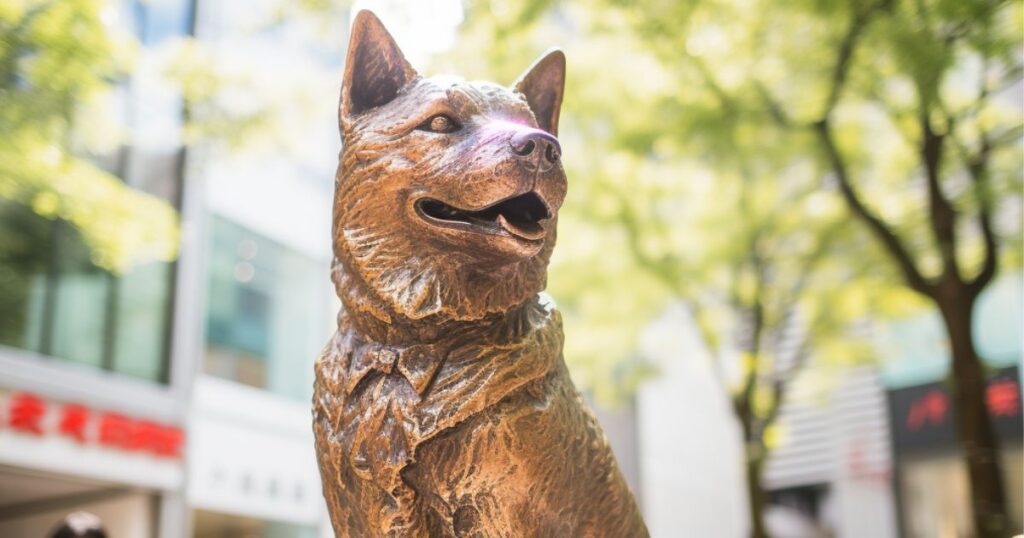In the bustling heart of Tokyo, a symbol of unwavering loyalty stands amidst the ceaseless flow of people. The Hachiko statue in Shibuya, more than just an unofficial landmark, is a poignant tribute to the bond between a dog and his master that continues to touch the hearts of locals and visitors alike. This Hachiko statue at Shibuya Station, a revered spot in Tokyo, represents more than just a story; it’s an emblem of enduring affection.
Table of Contents
Timeless Story in a Changing Cityscape:
In the early 1920s, Professor Eizaburo Ueno of Tokyo University found a companion in Hachiko, an Akita dog from Japan’s Akita prefecture.
Their daily routine around Shibuya Station was simple yet profound: Hachiko would see off his master at Shibuya Station as the professor headed to work and faithfully return at 3 pm to welcome him back. The Hachiko statue in Tokyo serves as a reminder of this routine.
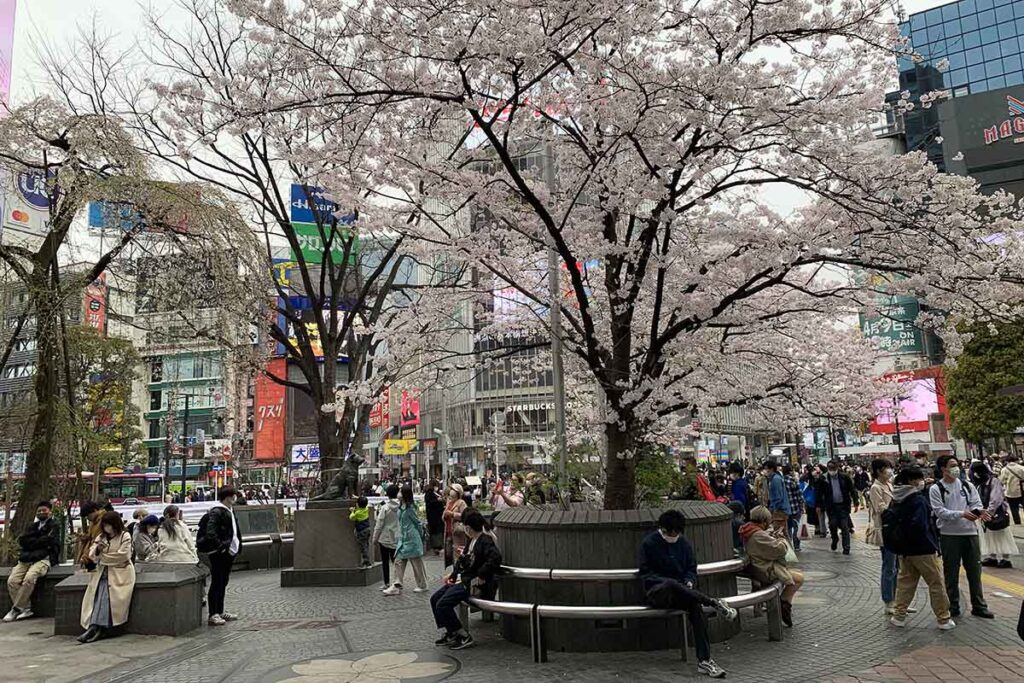
Tragically, in 1925, Professor Ueno passed away, leaving Hachiko to return to Shibuya Station alone, continuing this ritual for nearly a decade.
Snapshot of Shibuya’s Soul:
Standing just meters away from the famed Scramble Crossing, the Hachiko statue in Shibuya is not just a meeting point but an illustration of the enduring nature of love and loyalty.
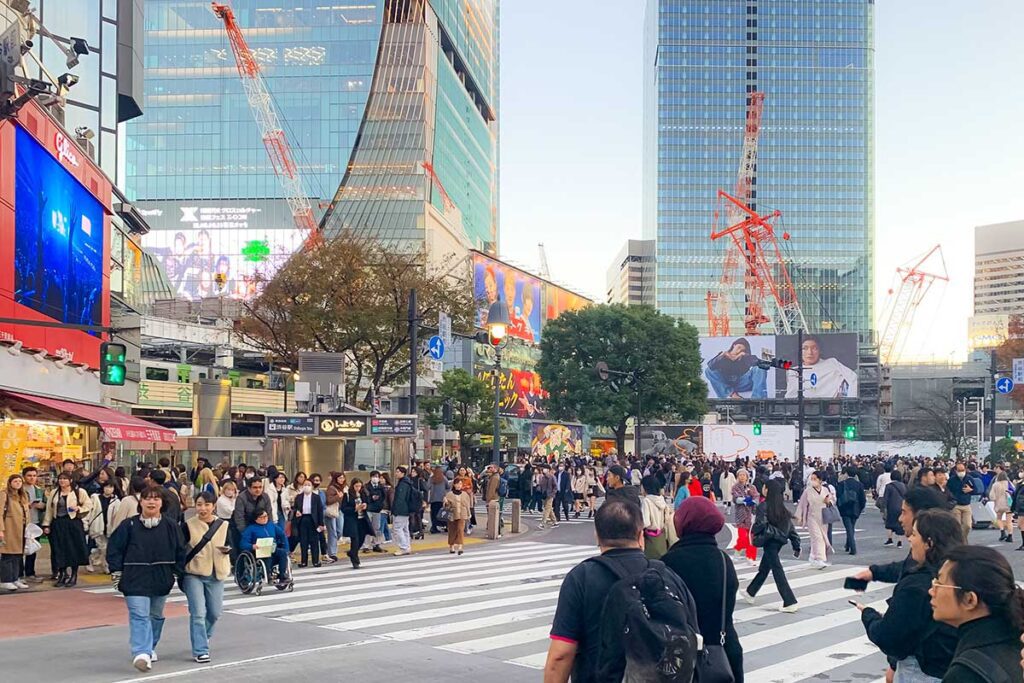
The Hachiko statue at Shibuya Station is a beacon in the modernity of Shibuya, standing as a constant reminder of a simpler, more heartfelt era.
Cultural Resonance & Artistic Tributes:
The story of Hachiko, immortalized by the Hachiko statue in Tokyo, resonates deeply within Japanese culture, embodying values of fidelity and perseverance.
In 2015, another Hachiko statue in Tokyo, located at the University of Tokyo, depicted a joyous reunion between Hachiko and Professor Ueno, providing a heartwarming conclusion to a story often tinged with sadness.
Hachiko in the Age of Social Media:
Today, the Hachiko statue in Shibuya is more than a historical site; it’s a cultural icon in the digital age.
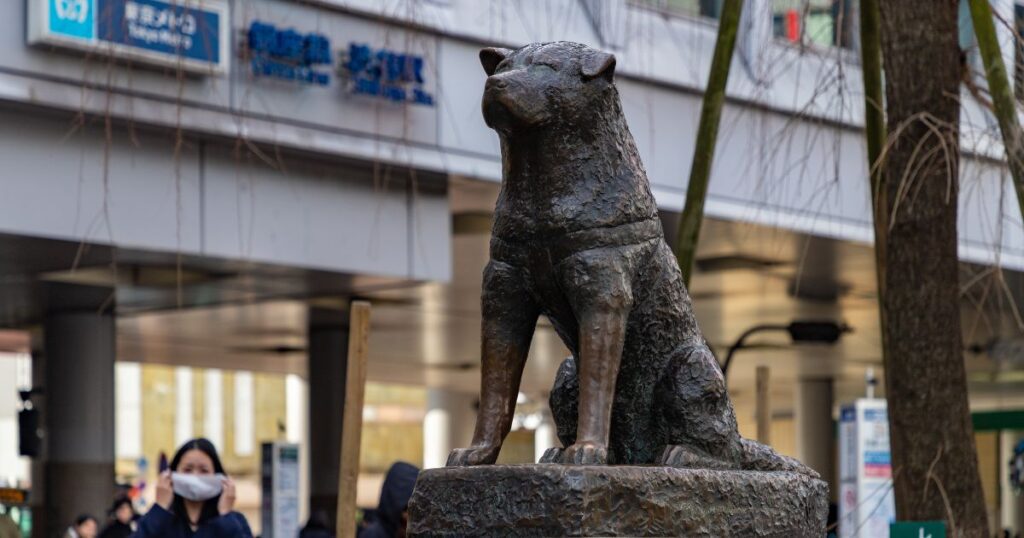
The Hachiko statue at Shibuya Station has become a hub for visitors from around the world, sharing their moments with Hachiko online and thus weaving his story into the global tapestry of shared human experiences.
Everlasting Appeal of Hachiko:
In a world that rapidly changes with each passing moment, the Hachiko statue in Shibuya remains a steadfast reminder of the timeless values of loyalty and devotion.
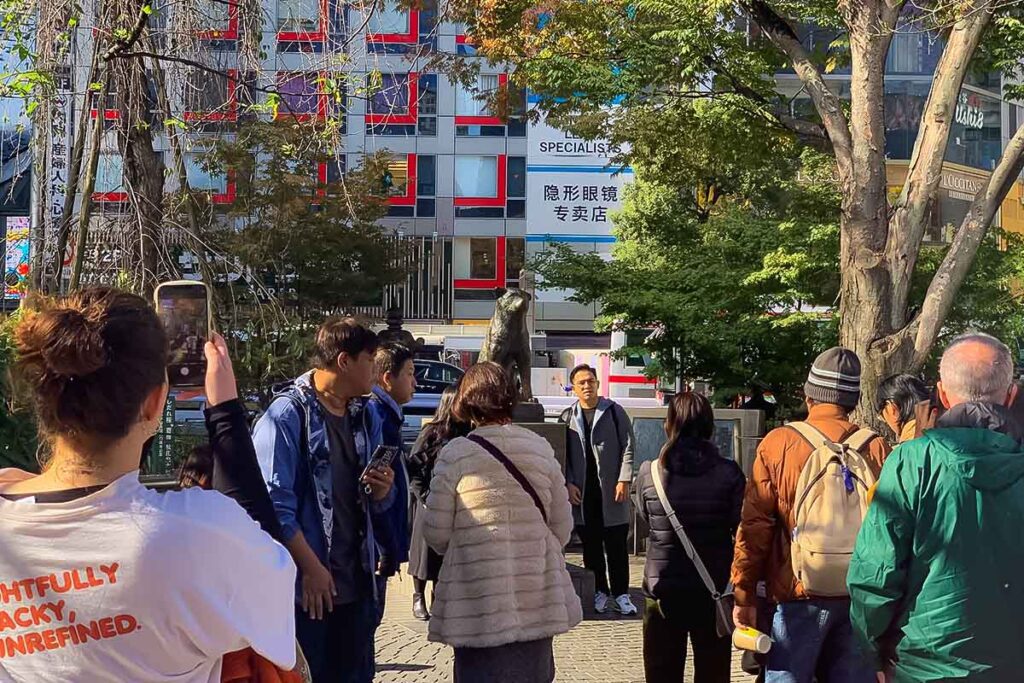
It stands not just as a monument to a dog and his master but as a symbol of the enduring power of love, transcending time, and bridging hearts across the world.
Why do people visit the Hachiko Statue?
The Hachiko Statue in Shibuya is a significant cultural landmark in Tokyo, symbolizing loyalty and devotion. It represents the story of Hachiko, a dog known for his unwavering wait for his owner. This poignant tale draws visitors who seek to connect with this deep expression of fidelity, making the statue a popular site.
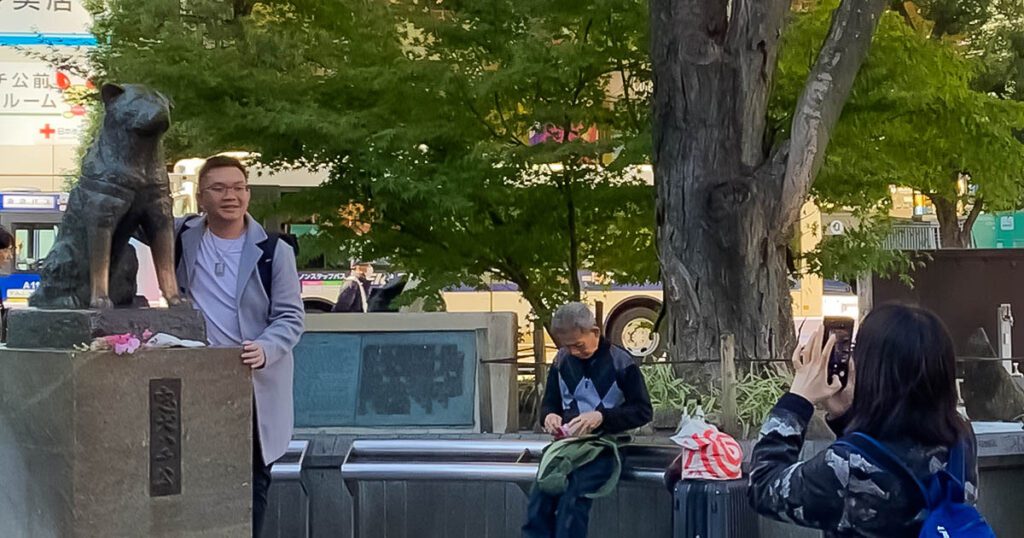
From early morning, visitors often queue to photograph the statue, with waiting times averaging 20-30 minutes and longer during weekends. Its appeal transcends age groups, making it a cherished spot for memories of Tokyo and the famous Shibuya Crossing.
Admission: Free
Opening hours: 24 hours
How to Access it?
To access the Hachiko statue in Shibuya, Tokyo, you can follow these steps:
- Travel to Shibuya Station: Shibuya Station is a major railway station in Tokyo, serviced by several lines, including JR Yamanote Line, JR Saikyo Line, JR Shonan Shinjuku Line, Tokyo Metro Hanzomon Line, Tokyo Metro Ginza Line, and Keio Inokashira Line. Choose the most convenient line for you depending on where you are coming from in Tokyo.
- Exit from Hachiko Exit: Once you arrive at Shibuya Station, look for signs directing you to the Hachiko Exit (Hachiko-guchi). This exit is specifically named after the famous statue and is a well-known landmark in the area.
- Find the Statue Near the Scramble Crossing: After exiting the station from the Hachiko Exit, the statue is located just a short walk away. It’s near the famous Shibuya Scramble Crossing, another area landmark. The statue is typically surrounded by people, often taking photos, making it easy to spot.
- Additional Tips:
- If you’re unfamiliar with Tokyo’s railway system, consider using a navigation app or a railway map.
- The area around the Hachiko statue can be quite crowded, especially during peak hours and weekends.
- There are often signs and maps within Shibuya Station to help guide you to the Hachiko Exit.
- If you’re unsure, don’t hesitate to ask a station attendant for directions.

Accessing the Hachiko statue is relatively straightforward, and it’s a popular spot for both tourists and locals, making it a well-signposted and recognized location in Shibuya.
Address:
Hachiko Statue, Hachiko Square
2 Chome-1 Dogenzaka, Shibuya City, Tokyo 150-0043, Japan
People Asked Questions:
1. Is the Hachiko statue still standing?
Yes, the Hachiko statue in Shibuya is still standing.
2. Is Hachi a true story statue?
Yes, the statue of Hachiko represents a true story.
3. Where is the statue of Hachiko located in Japan?
The statue of Hachiko is located in Shibuya, Tokyo, Japan.
4. Which exit is the Hachiko statue?
The Hachiko statue is near the Hachiko Exit of Shibuya Station.
Book Cheap Tickets:
